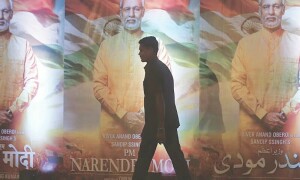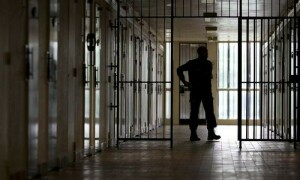
Creativity can often be sparked by something as simple as a chance encounter. A random interaction or a thought instilled by someone is sometimes enough to release a cascade of creativity. And other times, interactions like these are deliberately stimulated.
Collaborations in the art world are a pervasive practice that artists realise in various forms. The works produced through this process portray a physical conversation devoid of words. Collaborations facilitate creating more impact, incubating ideas, and trading perspectives.
In many cases, this exchange can be invaluable when an artist is in their earliest stages of creation — attempting to flesh out the bare bones of an inchoate concept. It challenges us to see possibilities we would not have anticipated before and affects how we think, act, and engage with our work and others.
Sanat Initiative in Karachi brought together eminent artists and husband-wife duo Maria Waseem and Waseem Ahmed to showcase a body of collaborative works they produced over the past year. The two artists conflate their chosen disciplines to present miniature paintings on photographic prints.
Maria Waseem was formally trained in architecture but inherited her mother’s passion for photography. Over the years, she has had numerous exhibitions of photographs that she took during her local and international travels. Her husband, Waseem Ahmed also graduated from the National College of Arts, where he studied miniature painting. Ahmed is one of those artists credited for the movement that interpreted and reinvented the traditional practice in a contemporary context.
Photographer Maria Waseem and miniaturist Waseem Ahmed see eye to eye about our neglected heritage sites
While, at first, their works may seem entirely disparate from each other because of their chosen mediums, the shared interests in concepts and subject matter manifest the common thread that weaves their practice together, making them more alike than dissimilar.
Waseem uses her lens to document the past stories embedded in ruins. The images address issues of heritage, preservation, and sites of memory. Ahmed’s work is rife with socio-political commentary; he situates the human figure in the context of time and history to retell various forms of displacement, conflict, and divisions.
The process of their collaboration entails Ahmed treating his wife’s photographic prints as a workspace to paint on with pigment and gouache. Most of the images which Waseem selected depict our contentious borders and their nearby regions. She photographs historical sites that have partly eroded over time, such as residential havelis, temples or statues. She focuses on damaged walls, abrasive textures and frescoes erased from vandalism or neglect.
Her photographs lend their suppressed voices a megaphone to call our attention to their stories and experiences. It also becomes a noteworthy process of archiving the palpable past before it entirely dissipates.
It remains unclear how solitary Ahmed’s decisions were on what to impose on Waseem’s photographs or how communicative they were in selecting images. However, his interventions congruently coalesce with the printed visuals underneath, despite literally painting cartographic fractures on some of them.
Instead of disrupting the pressing narrative showcased in her work, he emphasises the memory still living in these historical spaces and recounts their painful experiences, by painting canons, bullet holes, splatter and drones. However, true to his practice, Ahmed intersperses the visuals with mythological and spiritual imagery.
For instance, in some works, Ahmed fills the void left on the surface of these ruins with floral patterns and bountiful vegetation. A reference to heaven, the vibrant and fresh tones of the greenery inject a new life into the derelict buildings, perhaps teleporting them to their afterlife. By doing so, Ahmed shifts the factual aspect of these documented spaces to a realm that better identifies as semi-fiction. Weeds emerge from extended cracks on the walls and wild plants proliferate in gaping holes, illustrating the resilience and the firm promise of healing imbued in nature and semi-natural ecosystems.
The works also evidently shadow the formal processes involved in art conservation and restoration. Maria Waseem documents damaged heritage and Waseem Ahmed completes the missing and disfigured sections by hand, wilfully applying his creative input in places he finds appropriate. For instance, he shifts the missing piece from its original location to amplify the displacement in history.
This process permits the two artists to not only amend and rewrite history but propose a future they envision. While they cannot physically work on the actual sites, they showcase their earnest attempt to repair and acknowledge our dysfunctional history through this collaborative process.
Through their ways, the artists highlight the human effect violence has on people and places. Their bruised subjects seem out of place and unattended to, further fuelling the damage and corrosion they physically embody. The scars and imprints leave them obscure and unrecognisable. They withstand the changing time and cultural climate and bear a solemn optimism towards opportunities to heal.
‘Till Death Do Us Apart’ was on display at Sanat Initiative in Karachi from November 16, 2021 to November 25, 2021
Published in Dawn, EOS, November 28th, 2021
















































Dear visitor, the comments section is undergoing an overhaul and will return soon.